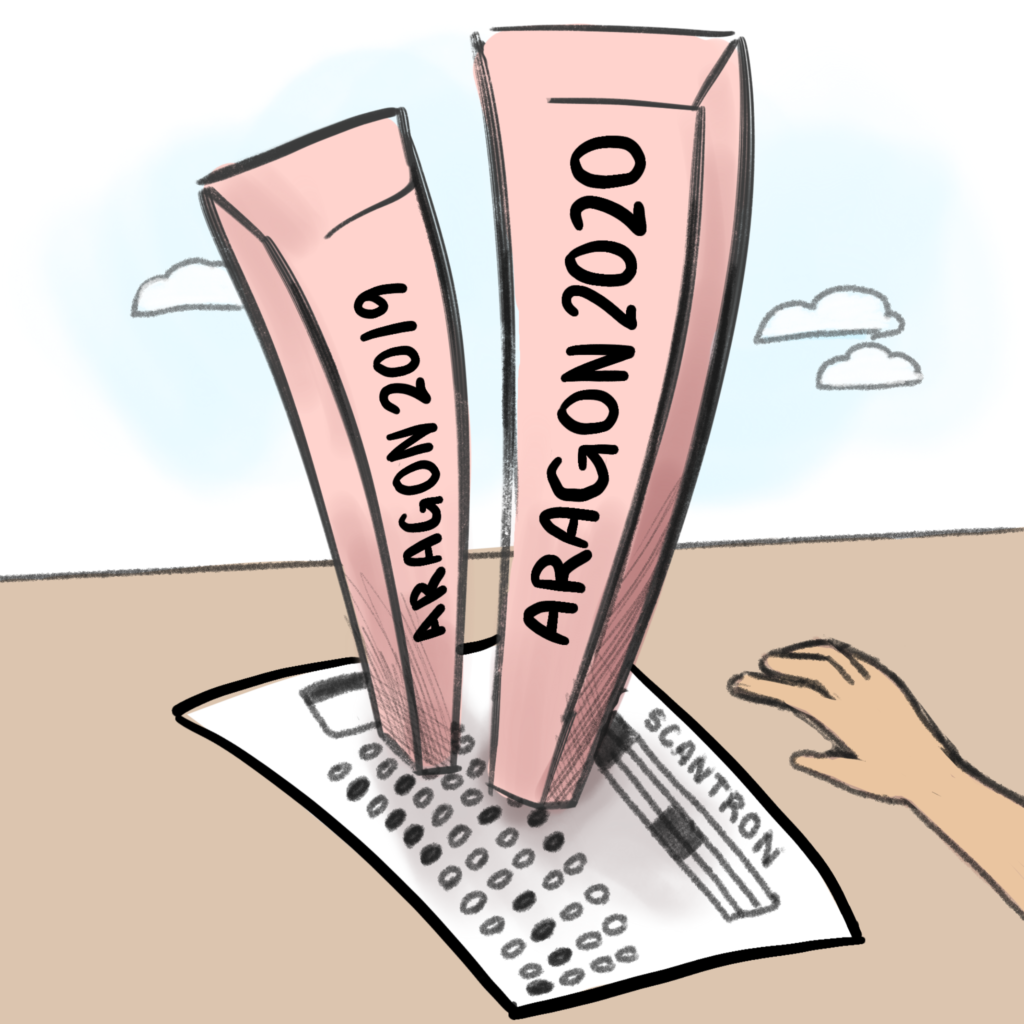
On Oct. 24, the California Department of Education released state standardized test scores from the 2021-22 school year. Test scores declined significantly across the state, matching nationwide trends. However, despite the pandemic, Aragon’s California Assessment of Student Performance and Progress scores showed notable improvement from pre-pandemic years.
The CAASPP test gauges the percentage of students meeting state standards and college readiness markers. In April 2022, Aragon juniors took the CAASPP for the first time since 2019. In comparison to before the pandemic, the number of students who met or exceeded math and English language arts standards was 12% and 9% more respectively.
Aragon’s scores for the 2018-19 school year were 77.12% for ELA and 50.88% for math. For the 2021-22 school year, the scores for juniors meeting or exceeding standards were 85.96% for ELA and 62.86% for math.
In contrast, the amount of California juniors who met or exceeded standards dropped 3% in ELA and 5% in math.
During the 2018-19 school year, 57.27% of juniors across the state of California met or exceeded ELA standards while 32.24% of juniors met or exceeded math standards. For the 2021-22 school year, 54.80% of 11th graders across the state of California met or exceeded ELA standards while 26.97% of 11th graders met or exceeded math standards.
Despite the record-low scores, California performed well relative to other states. A statement from the Office of Governor Gavin Newsom credited this to higher education funding and student support.
Critics blame the score disparity on California’s slow return to in-person learning. However, there is no clear correlation between re-opening times and performance.
For example, San Mateo Union High School District fared better than the state with a less than 1% drop in math and 5% increase in ELA, despite opening relatively late.
“I think we are producing really strong learners and as a result, [students] do well on tests”
Vice principal Nicole Elenz-Martin credits the school’s success to its project-based learning approach, which can benefit standardized testing.
“[Aragon has] many dedicated professionals who care about students learning both [how] to do well on tests, but also [how] to do well in discussions, debates and group work and being good mentors for others,” Elenz-Martin said. “It’s not like we were holding test-taking sessions on how to do well. I think we are producing really strong learners and as a result, [students] do well on tests.”
In addition, the pandemic led teachers to build more focused curricula.
“Teachers [were] trying to figure out what [were] the most engaging and skill-building activities they could do with students in that limited zoom time,” said Principal Valerie Arbizu. “The assignments that I saw were a little bit more targeted.”
There is also a different bell schedule for the two weeks of CAASPP testing, with alternating later start times, assemblies and testing.
“We tried to be very clear about organizing our bell schedule in a thoughtful way that made the entire student body know we take this test seriously,” Elenz-Martin said. “We [changed] our entire schedule for it. For the staff, faculty, families and students to know that this was very important … might have made a difference.”
“We tried to be very clear about organizing our bell schedule in a thoughtful way”
For some students, the schedule was a welcome break during a stressful time.
“It was nicer to come in later on days where we didn’t have testing,” said senior Mounami Reddy Kayitha. “I think it was nice to have separate time from the school.”
Aragon also strived to curate a comfortable testing environment for students with teachers assigned to proctor and check in and snacks.
“It was a very chill atmosphere,” Kayitha said. “A lot of my friends took the snacks and said they were nice. It wasn’t stressful at all.”
Despite the overall experience being satisfactory, the organization of classrooms had room for improvement.
“Having to find out which classroom we were supposed to be in was definitely a little confusing at first,” Kayitha said. “It wasn’t very well explained.”
While the CAASPP test is only one metric of student success, it also aids schools in identifying achievement gaps and areas of concern. Because 2022 was the first relatively normal school year in two years, schools across the state plan to use the 2023 results to observe clearer trends.
*Additional reporting by Kylie Avila
Correction: In a previous version, a quote was attributed to Valerie Arbizu that was actually said by Nicole Elenz-Martin.
